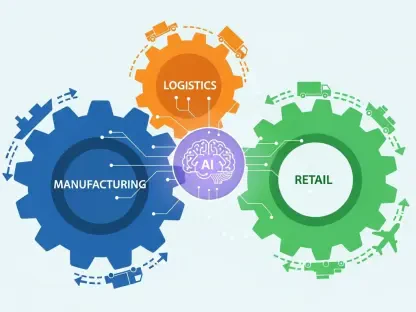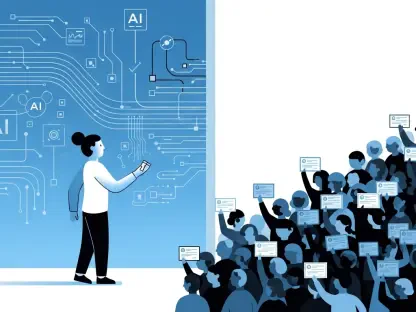Overview of the AI and Smartphone Industries
The rapid evolution of artificial intelligence (AI) and smartphone technology has transformed the modern tech landscape, with both sectors experiencing unprecedented growth and reshaping how billions access information. AI, particularly generative models, drives innovation across industries, while smartphones remain the primary gateway for consumer interaction with digital services. Together, these fields shape how people communicate and engage with cutting-edge tools, making their intersection a battleground for market control.
Key players dominate this space, with Apple holding a commanding 65% share of the U.S. smartphone market, and OpenAI leading the generative AI chatbot arena with an 80% market share through ChatGPT. Competitors like xAI and social platform X challenge these giants, striving to carve out space in an increasingly concentrated environment. The ability to integrate AI into smartphone ecosystems has become a critical differentiator, as consumers demand seamless, intelligent experiences from their devices.
Technological advancements, especially in generative AI, have amplified the stakes, with market dominance directly influencing consumer access to innovation. Companies that control these platforms can dictate which tools gain traction, often sidelining smaller rivals. This dynamic underscores the importance of fair competition, as the integration of AI into everyday technology continues to redefine user expectations and industry standards.
Dynamics of the Apple-OpenAI Partnership
Details of the Collaboration
Announced in mid-2024, the partnership between Apple and OpenAI marks a significant alignment of two tech powerhouses, integrating ChatGPT directly into the iPhone operating system through Siri and other native features. This collaboration positions ChatGPT as the primary AI assistant for millions of Apple users, offering a streamlined experience that competitors struggle to replicate. The deal has drawn attention for its scope, potentially reshaping how AI is accessed on one of the world’s most popular platforms.
Allegations have surfaced, however, that this arrangement grants OpenAI exclusive access to vast amounts of user data, raising concerns about privacy and competitive fairness. Critics, including xAI and X, claim Apple exhibits favoritism by prioritizing ChatGPT in App Store rankings and delaying updates for rival apps like xAI’s Grok. Such actions, if proven, could indicate a deliberate strategy to cement the dominance of both companies in their respective markets.
The potential benefits for Apple and OpenAI are clear: Apple enhances its ecosystem with cutting-edge AI, while OpenAI gains unparalleled reach through Apple’s user base. This mutual reinforcement could solidify their positions as industry leaders, but it also prompts questions about the broader implications for market diversity. The partnership’s structure appears designed to maximize strategic advantage, potentially at the expense of emerging players.
Market Impact and Growth Concerns
With Apple’s extensive reach—encompassing hundreds of millions of active devices globally—the partnership’s scale offers OpenAI a massive platform to expand its influence. Market share data suggests that this collaboration could further entrench both companies’ dominance, as Apple’s 65% U.S. smartphone share paired with OpenAI’s 80% generative AI chatbot share creates a formidable barrier for competitors. This exclusivity limits rival technologies’ ability to penetrate a critical consumer touchpoint.
The arrangement’s impact on growth in both AI and smartphone sectors is a growing concern among industry observers. By restricting access to Apple’s ecosystem, smaller AI firms face significant hurdles in reaching users, potentially stunting innovation across the board. This dynamic risks creating a market where only a handful of players dictate technological progress, leaving consumers with fewer choices in AI-driven features.
Looking ahead, such exclusive partnerships could skew market dynamics further if unchecked. The concentration of power in a few hands might deter investment in alternative AI solutions, as startups struggle to compete without access to major platforms. This trend raises critical questions about the long-term health of competition in these vital sectors, with implications for both industry growth and user experience.
Challenges and Controversies in Tech Competition
The core of the legal challenge from xAI and X centers on accusations of monopolistic behavior by Apple and OpenAI, as detailed in a 61-page complaint filed in a Texas federal court. The lawsuit alleges that the partnership is structured to suppress competition by blocking rival AI technologies from gaining equal footing within Apple’s ecosystem. Specific grievances include manipulated App Store rankings and delayed updates for competing apps, which plaintiffs argue are deliberate tactics to hinder challengers.
Beyond this specific case, the tech industry grapples with systemic challenges that exacerbate competitive imbalances. Smaller AI firms often face insurmountable barriers to entry, such as limited access to user data or distribution channels controlled by giants like Apple. These obstacles can stifle innovation, as new entrants lack the resources or visibility to develop and market alternative solutions effectively.
Addressing these issues requires multifaceted strategies, including legal actions like the current lawsuit, which seeks to expose and dismantle alleged anticompetitive practices. Additionally, there are growing calls for enhanced market oversight to ensure dominant players do not abuse their position. Such measures could help level the playing field, fostering an environment where innovation thrives rather than being curtailed by entrenched interests.
Regulatory Landscape and Antitrust Scrutiny
The regulatory environment surrounding tech partnerships in the U.S. is increasingly focused on antitrust concerns, particularly in high-stakes markets like AI and smartphones. Existing laws aim to prevent monopolistic practices, but their application to rapidly evolving technologies remains a complex challenge. Authorities are tasked with balancing innovation incentives against the need to protect competition, a delicate line in industries driven by constant change.
Lawsuits like the one filed by xAI and X play a pivotal role in drawing regulatory attention to exclusive agreements between tech giants. This case highlights how such partnerships can potentially limit market access for others, prompting calls for closer scrutiny of similar arrangements. The outcome could influence how regulators approach future collaborations, especially those involving critical consumer platforms.
There is also potential for new policies or compliance requirements to emerge as a result of these legal battles. Regulators may push for stricter guidelines on data sharing and platform access to ensure fair treatment of competitors. Such developments would likely reshape how AI technologies are integrated into widely used systems, aiming to prevent market concentration from undermining consumer interests.
Future of AI and Smartphone Market Competition
The trajectory of the AI and smartphone industries hinges on the resolution of disputes like the current lawsuit, which could either spur greater competition or lead to further consolidation among tech giants. If successful, legal challenges may encourage smaller firms to assert their rights, potentially diversifying the market. Conversely, a failure to address alleged anticompetitive behavior might embolden dominant players to tighten their grip.
Emerging trends, including heightened public and governmental scrutiny of monopolistic practices, are already influencing the competitive landscape. This growing awareness could drive policy changes that prioritize transparency and fairness in tech partnerships. Additionally, consumer demand for diverse AI tools may push companies to adopt more open ecosystems, countering the trend toward exclusivity.
Innovation remains a wildcard, as breakthroughs in AI could disrupt existing hierarchies if accessible to a broader range of players. Global economic factors, such as investment in tech startups, will also shape how competition unfolds over the coming years. The interplay of these elements suggests a dynamic future, where the balance between collaboration and competition will define the next era of technological advancement.
Conclusion and Implications
Reflecting on the legal battle between xAI, X, Apple, and OpenAI, it becomes evident that the allegations of anticompetitive behavior strike at the heart of tech industry dynamics. The personal rivalry between key figures adds a layer of intrigue, but the core issue remains the potential precedent set by such partnerships. The case illuminates broader concerns about market fairness that demand attention from all stakeholders.
Moving forward, policymakers are urged to consider frameworks that ensure equitable access to critical platforms, preventing dominant players from sidelining innovation. Smaller tech firms, meanwhile, need to advocate for transparent practices and seek alliances that amplify their reach. Collaborative efforts to establish industry standards could foster a more inclusive environment.
Ultimately, the resolution of this dispute offers a chance to redefine how tech giants operate within competitive spaces. By prioritizing fair play over unchecked dominance, the industry could pave the way for a future where AI and smartphone advancements benefit a wider array of contributors and consumers alike.









